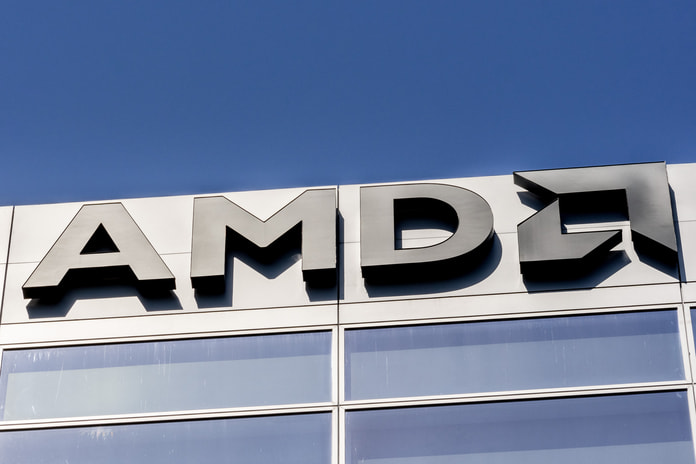AMD (NASDAQ:AMD) has been performing so well that Wall Street appears to be in awe. While semiconductors’ long-term growth story remains unrivaled, consensus expectations are perhaps too low given the extended growth runway. Despite the excellent growth forecast, the company is trading at only 22x forward earnings. I continue to rank the stock as a buy as the company transitions from hyper-growth to a cash flow machine.
AMD Stock Price
Even with the tech meltdown, Advanced Micro Devices has been a high flyer. I last wrote about the company in April, when I analyzed what the stock might look like in ten years. In theory, it is a company that should be kept for long periods since the long-term compounding potential should eventually contribute to operating leverage.
AMD Stock Key Metrics
The multinational semiconductor company’s most recent quarter saw tremendous revenue growth and gross margin expansion. As shown here, data center sales continue to be a major growth driver. Gaming revenues, for which it is best known, increased 32%, which is still good given the difficult comparables. It’s worth mentioning that data center sales are on the verge of surpassing gaming revenues. Embedded revenue increased by 2,228%, but this was primarily due to the completed acquisition of Xilinx. Revenue increased by 28% year over year on a per-share basis.
Because of operating leverage, the 28% per share top-line growth converted into 66.7% non-GAAP EPS growth. AMD closed the quarter with $6.0 billion in cash vs $2.8 billion in debt, indicating a significantly robust balance sheet that may be advantageous in light of current market volatility.
Looking ahead, AMD anticipates a 55% increase in revenue to roughly $6.7 billion in the third quarter, with a 60% increase to $26.3 billion for the whole year. These great results are made even more amazing because they outperform the challenging 2021 comparables.
Is AMD Stock A Good Value Now?
AMD is rated C+ by Seeking Alpha’s valuation algorithm, presumably because its valuation is significantly higher than peers. Analysts on Wall Street are more optimistic, with a 4.1 out of 5 buy recommendation. The average price objective of $122.62 per share represents a potential upside of roughly 20%.
Where Will AMD Be By 2025
Looking ahead, I anticipate AMD will continue growing rapidly, driven by expansion in its data center sector. The consensus estimates on Wall Street are less solid. According to consensus projections, growth will slow dramatically, with revenues expanding in the low double digits after 2022. On the other side, management stated during their 2022 Analyst Day that long-term top-line growth should be about 20%.
Assuming management can meet that aim, AMD may generate $45 billion in revenue by 2025. Assuming a similar multiple to today, AMD might be worth $170 per share by 2025.
Is AMD Stock A Buy, Sell, or Hold?
The answer hinges on one’s belief in management’s capacity to meet aggressive targets. Conventional wisdom implies that consensus projections are not too far off the mark, as it would not be odd for growth to slow following such tremendous development in recent years. With some operating leverage, consensus projections of 11% top-line growth might translate into 13% to 15% earnings growth. We’re seeing e-commerce and fintech companies slow their growth as they catch up to harsh comparables; perhaps AMD will follow suit.
AMD is currently trading at roughly 22 times profits on a non-GAAP basis. It is worth mentioning that equity-based compensation does not account for a large amount of non-GAAP profits, accounting for only 11% in 2021. As a result, non-GAAP earnings are regarded as a solid metric.
The company is currently trading at a price-to-earnings-growth ratio (‘PEG ratio’) of less than 1.5x, which is considered relatively affordable. AMD is already repurchasing stock and may be on the verge of instituting a quarterly dividend. The company’s financial position appears stable enough to justify a premium price. But what if management’s 20% top-line estimate is correct?
The value proposition becomes more attractive at this point. The company may be able to improve its bottom line by 22% to 24%, implying a 35x earnings multiple at a 1.5x PEG ratio. AMD would have a 60% upside, not factoring in any growth potential.
Given the constant demand for semiconductor chips, it is easy to trust such a claim. Key risks, in this case, include missed growth projections and potential exposure to an economic slowdown. While I consider AMD’s data center business mission vital, the company has likely overestimated its exposure to the collapsing cryptocurrency sector, for example.
The stock is not technically overpriced at this point. Still, the predicted potential would be significantly reduced if growth rates were too slow. One overlooked risk may be connected to how the 20% growth guidance is interpreted. AMD’s quarterly announcements also do not differentiate between “organic” growth and total growth, arguably far more important to shareholders.
It is plausible that AMD is aiming for 20% nominal growth, which would benefit stockholders significantly less. Because 22x earnings is an undemanding price, I continue to rank the company as a buy.
Featured Image: Megapixl © Andreistanescu

















